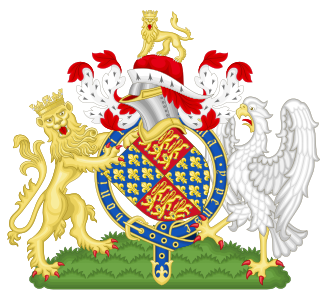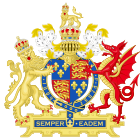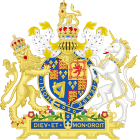
The Act of Uniformity 1558 was an Act of the Parliament of England, passed in 1559, to regularise prayer, divine worship and the administration of the sacraments in the Church of England. In so doing, it mandated worship according to the attached 1559 Book of Common Prayer. The Act was part of the Elizabethan Religious Settlement in England instituted by Elizabeth I, who wanted to unify the church. Other Acts concerned with this settlement were the Act of Supremacy 1558 and the Thirty-Nine Articles.

The Ecclesiastical Licences Act 1533, also known as the Act Concerning Peter's Pence and Dispensations, is an Act of the Parliament of England. It was passed by the English Reformation Parliament in the early part of 1534 and outlawed the payment of Peter's Pence and other payments to Rome. The Act remained partly in force in Great Britain at the end of 2010. It is under section III of this Act, that the Archbishop of Canterbury can award a Lambeth degree as an academic degree.

The Suppression of Religious Houses Act 1539, sometimes referred to as the Second Act of Dissolution or as the Act for the Dissolution of the Greater Monasteries, was an Act of the Parliament of England.

The Act of Uniformity 1551, sometimes referred to as the Act of Uniformity 1552, was an Act of the Parliament of England.

The Act of Uniformity 1548 or the Act of Uniformity 1549 was an Act of the Parliament of England, passed on 21 January 1549.

The Coronation Oath Act 1688 is an Act of the Parliament of England. It was passed in 1689.
An Appropriation Act is an Act of the Parliament of the United Kingdom which, like a Consolidated Fund Act, allows the Treasury to issue funds out of the Consolidated Fund. Unlike a Consolidated Fund Act, an Appropriation Act also "appropriates" the funds, that is allocates the funds issued out of the Consolidated Fund to individual government departments and Crown bodies. Appropriation Acts were formerly passed by the Parliament of Great Britain.

The Benefit of Clergy Act 1575, long title An Act to take away clergy from the offenders in rape and burglary, and an order for the delivery of clerks convict without purgation, was an Act of Parliament of the Parliament of England enacted during the reign of Elizabeth I.

The Statute of Stabbing was an Act of the Parliament of England enacted during the reign of James I and repealed in 1828. It provided that if any person stabbed "any person that hath not any weapon drawn or that hath not then first stricken the party", and they died within six months as a result, was to suffer the death penalty without being permitted benefit of clergy. Under the statute, killings subject to benefit of clergy were called manslaughters and required that a defendant prove a "sudden quarrel" or provocation. Deaths resulting from armed attacks that had been planned in advance were called murders. The Act was repealed by section 1 of the Offences against the Person Act 1828 and section 125 of the Criminal Law (India) Act 1828.

The Succession to the Crown Act 1603, full title A most joyful and just recognition of the immediate, lawful and undoubted Succession, Descent and Right of the Crown, was an Act of Parliament of the Parliament of England enacted during the reign of James I. The Act recited the loyalty of Parliament to James, and stated that the English crown, on the death of Elizabeth I, had come to him "by inherent birthright and lawful and undoubted succession". It acknowledged him as the legitimate king "of England, Scotland, France and Ireland". The Act was repealed by the Statute Law Revision Act 1948, having become obsolete in the intervening three centuries.

The Union of England and Scotland Act 1603, full title An Act authorizing certain Commissioners of the realm of England to treat with Commissioners of Scotland, for the weal of both kingdoms, was an Act of Parliament of the Parliament of England enacted during the reign of King James I. It appointed a commission led by the Lord Chancellor, Lord Ellesmere, to meet and negotiate with a commission which would be appointed by the Parliament of Scotland. The aim of the discussions was to look into the possibility of arranging a formal political union between England and Scotland, going beyond the existing Union of Crowns, and to report back to Parliament. The commission was not effective, however, and similar subsequent proposals also fell flat. The two kingdoms were eventually united over a century later, by the Acts of Union 1707.

The Rebellion Act 1572, full title An Act for the punishment of such as shall rebelliously take or detain or conspire to take or detain from the Queen's Majesty any of her castles, towers, fortresses, holds, &c., was an Act of Parliament of the Parliament of England enacted during the reign of Elizabeth I. It provided that if any person was convicted of conspiring to seize or destroy any castle or fortification held or garrisoned by the Queen's forces, then they and any associates were to be judged felons and suffer the death penalty without benefit of clergy or sanctuary. If any person was to prevent the use of any royal castle or ordnance by the crown, destroy any of the Queen's ships, or prevent the use of a harbour within the realm, then they were to be considered guilty of high treason and sentenced accordingly. The Act remained in force until the death of Elizabeth in 1603, when it expired, and was formally repealed by the Statute Law Revision Act 1863.

The Escape of Traitors Act 1572, full title An Act against such as shall conspire or practice the enlargement of any prisoner committed for high treason, was an Act of Parliament of the Parliament of England enacted during the reign of Elizabeth I.

The Treason Act 1551 was an Act of the Parliament of England.

The Suppression of Religious Houses Act 1536, also referred to as the Act for the Dissolution of the Lesser Monasteries (1536) and as the Dissolution of Lesser Monasteries Act, was an Act of the Parliament of England enacted by the English Reformation Parliament in February 1535/36. It was the beginning of the legal process by which King Henry VIII set about the Dissolution of the Monasteries.

The Statute of Praemunire was an Act of the Parliament of England enacted in 1392, during the reign of Richard II. Its intention was to limit the powers of the papacy in England, by making it illegal to appeal an English court case to the pope if the king objected, or for anyone to act in a way that recognized papal authority over the authority of the king. In the 15th century it came to be read as including within its ban ecclesiastical courts inside England. The statute was later reaffirmed by the Statute in Restraint of Appeals in the reign of Henry VIII and was used to remove Thomas Wolsey from power. The word praemunire originally referred to the writ of summons issued against a person accused under this and similar statutes, and later came to mean offences against the statutes.

The Toleration Act 1688, also referred to as the Act of Toleration, was an Act of the Parliament of England. Passed in the aftermath of the Glorious Revolution, it received royal assent on 24 May 1689.

The Hospitals for the Poor Act 1572 was an Act of the Parliament of England.

The Fires Prevention Act 1785 or the Fires Prevention (Metropolis) Act 1785 was an Act of the Parliament of Great Britain.

The Summary Jurisdiction Act 1884 was an Act of the Parliament of the United Kingdom. Courtney Ilbert described this Act as an "expurgatory Act".









